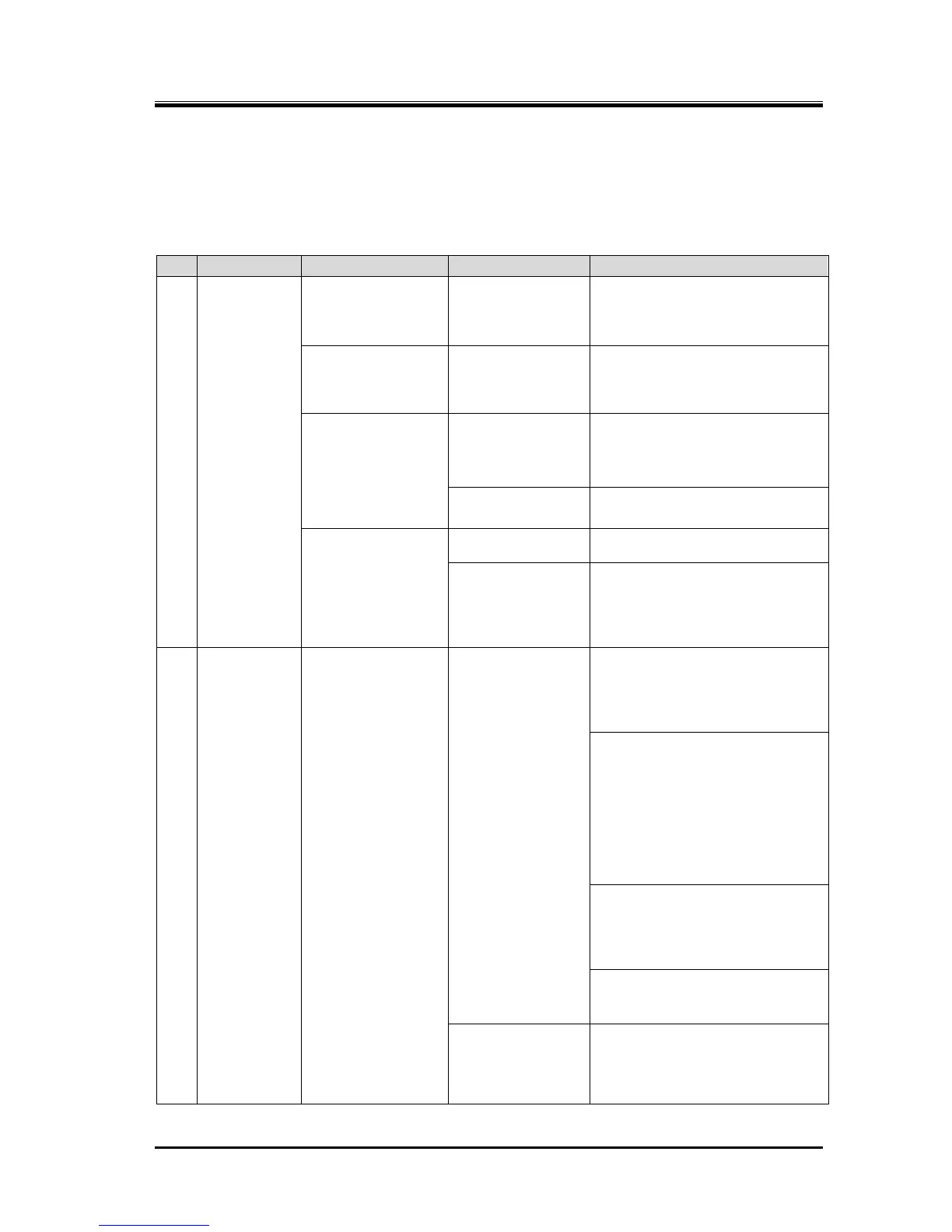2203M4JE-MY-iS2-N_2017.04.
Chapter 6 Troubleshooting
Screw Compressor i-series
6-1
Chapter 6 Troubleshooting
Table 6-1 describes typical trouble symptoms of compressors, their causes and actions to be taken.
The explanations of this Chapter are assumed that the compressor is used in the general refrigeration
cycle.
Table 6-1
Troubleshooting
forgetting to turn on
after inspection.
post-inspection actions and
implement finger pointing and call
check to prevent forgetting.
activation of
overload protection
Refer to the instruction manual of
the motor for details including
other causes and actions.
circulation is not
confirmed.
such as cooling
water pump and
related circuits
Identify defective devices,
investigate causes of failure and
take necessary actions.
Then, replace failed device(s).
relay, etc. in
compressor startup
circuit
Identify defective devices, and
replace with a new one.
Replace ventilation fans, etc. if
defective.
Improve temperature, humidity
and ventilation at the installation
stops
immediately
after startup.
protection circuit
activates.
refrigerant flow
・ Insufficient
refrigerant
・ Insufficient
liquid supply
・ Heat exchange
failure in heat
exchanger
To correct insufficient refrigerant,
check leak, stop leak and then
add refrigerant.
* Also pay attention to moisture
entering into the system.
To correct insufficient liquid
supply, inspect expansion valve
and liquid supply strainer. Take
necessary actions.
In addition, inspect devices and
parameters (set values) of the
expansion valve aperture
adjusting mechanism, and take
(insufficiency) in heat exchange,
such as malfunction of defrosting,
investigate the cause and take
In case of malfunction of pressure
adjustment valve, replace the
valve or remove the cause.
pressure protection
switch, pressure
sensor, relay, etc.
Identify defective devices,
investigate causes of failure and
take necessary actions.
Then, replace failed device(s).
